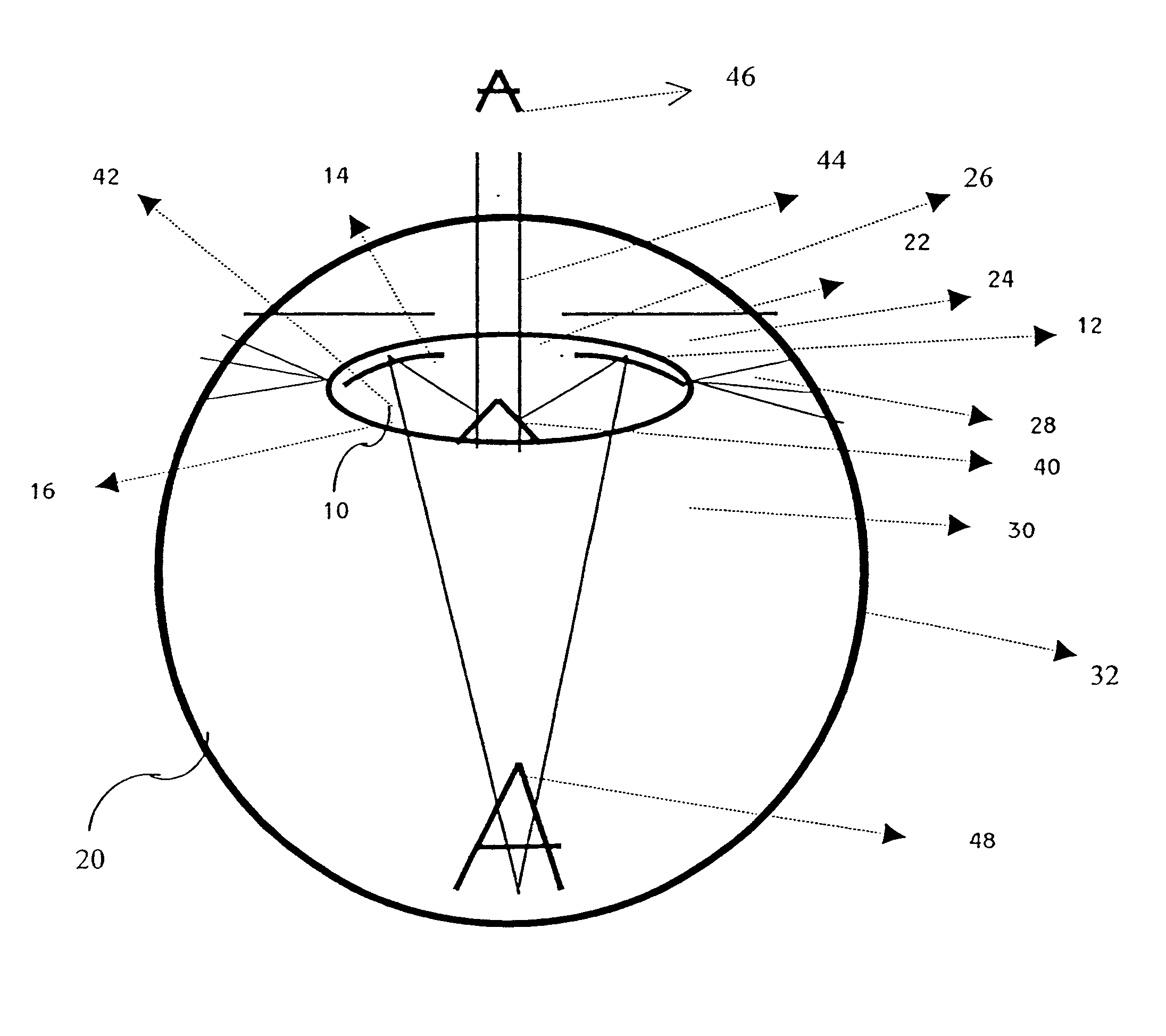Intraocular lens implant with mirror
a technology of intraocular lens and mirror, which is applied in the field of intraocular lens, can solve the problems of narrow vision, difficulty in central vision, and common cause of visual loss among people, and achieve the effects of narrowing the pupillary opening, reducing and increasing the amount of light entering the ey
- Summary
- Abstract
- Description
- Claims
- Application Information
AI Technical Summary
Benefits of technology
Problems solved by technology
Method used
Image
Examples
Embodiment Construction
[0081]The present invention is of an intraocular insert for implantation in the interior of the human eye and, more particularly, to an intracular implant containing at least one mirror, which can be used in the treatment of regular cataracts, and of disorders of central, as well as of disorders of peripheral, vision. Specifically, the present invention can be used to treat AMD and other macular degenerations. Modifications of the intraocular insert can be used for the treatment of other ocular disorders including retinitis pigmentosa and glaucoma and other causes of impaired peripheral vision, for example.
[0082]The principles and operation of an intracular implant containing at least one mirror according to the present invention may be better understood with reference to the drawings and accompanying descriptions.
[0083]Before explaining at least one embodiment of the invention in detail, it is to be understood that the invention is not limited in its application to the details of c...
PUM
 Login to View More
Login to View More Abstract
Description
Claims
Application Information
 Login to View More
Login to View More - R&D
- Intellectual Property
- Life Sciences
- Materials
- Tech Scout
- Unparalleled Data Quality
- Higher Quality Content
- 60% Fewer Hallucinations
Browse by: Latest US Patents, China's latest patents, Technical Efficacy Thesaurus, Application Domain, Technology Topic, Popular Technical Reports.
© 2025 PatSnap. All rights reserved.Legal|Privacy policy|Modern Slavery Act Transparency Statement|Sitemap|About US| Contact US: help@patsnap.com



